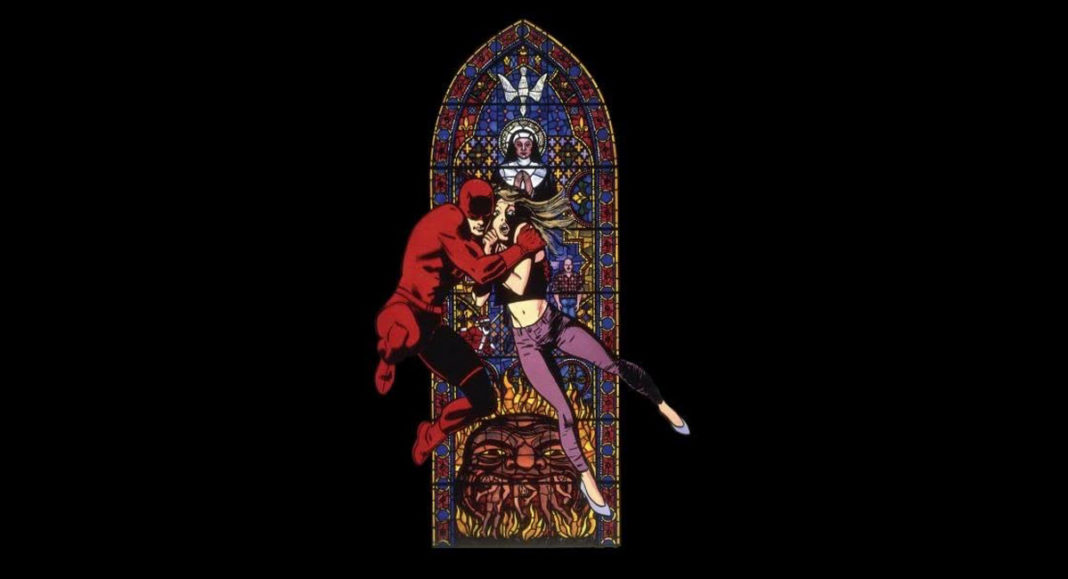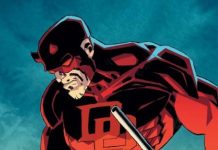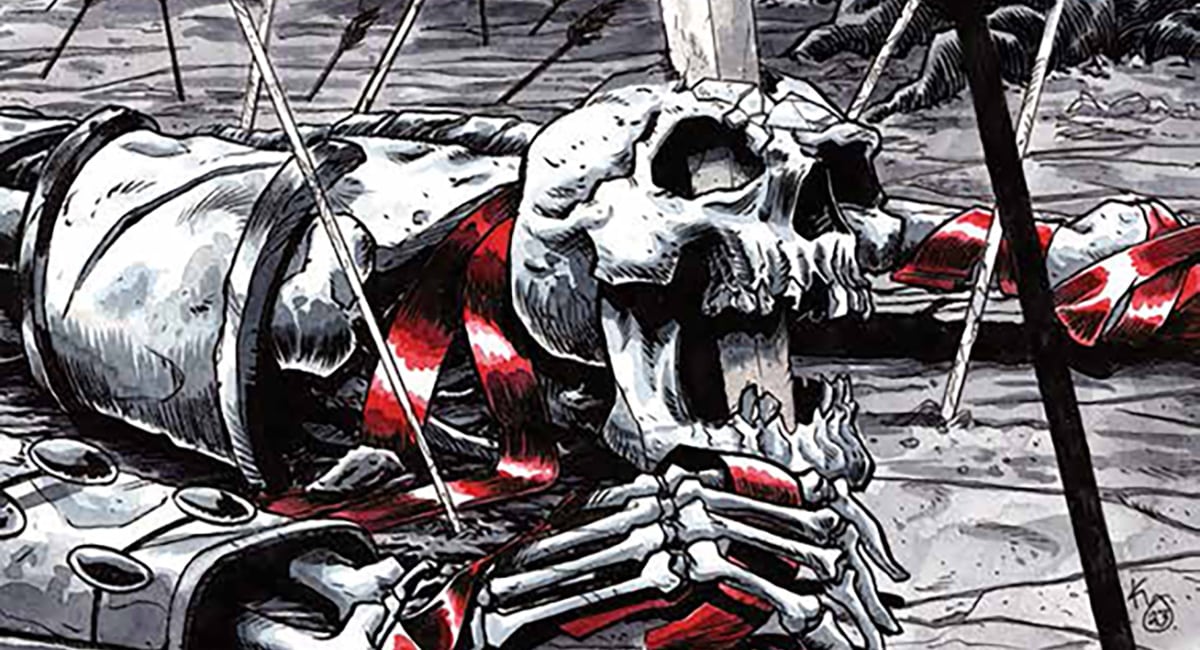This week the Marvel Rundown team is taking a look at another classic tale from the House of Ideas. In 1986, writer Frank Miller returned to the character that propelled him to superstardom when he joined artist David Mazzucchelli for a seven-issue Daredevil arc that would change the direction of the series for decades to come. The “Born Again” storyline is widely considered to be a seminal Daredevil story, and we’re revisiting the tale to see how well it holds up after all these years, and just why it earned its place in Marvel history.
Check out our reviews and reflections on Daredevil: Born Again in this week’s installment of The Marvel Rundown!
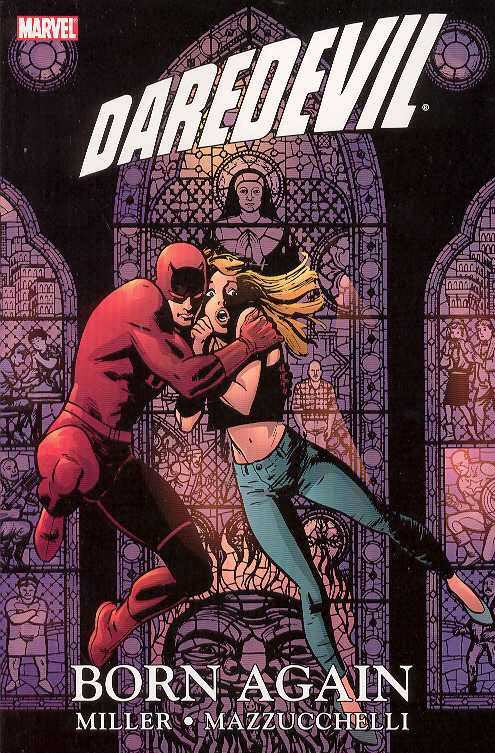
Daredevil: Born Again
Originally published in Daredevil #227-233
Written by Frank Miller
Illustrated by David Mazzucchelli
Colored by Christie “Max” Scheele
Collected edition colors by Richmond Lewis
Lettered by Joe Rosen
Cover by David Mazzucchelli
Joe Grunenwald: Daredevil is a title that has had several creative teams with significant extended runs. From Frank Miller’s career-making (and series-saving) run as writer/artist in the early ‘80s, to Ann Nocenti and John Romita Jr.’s iconic stretch on the series, to the Marvel Knights runs of Brian Michael Bendis & Alex Maleev and Ed Brubaker & Michael Lark, to more recent turns by Mark Waid & Chris Samnee and Charles Soule & Ron Garney, the character’s history has largely been defined by creators settling in for a long haul. It’s interesting, then, that one of the seminal Daredevil stories is so short. Miller and David Mazzucchelli’s “Born Again” storyline completely upended Matt Murdock’s status quo, established a new one for the character, introduced (and reintroduced) characters who would become essential to the series, and completely altered the dynamic between Daredevil and his greatest foe. And it did all of this in the span of just seven issues.
From the outset, “Born Again” is a story that moves. The first issue alone sees Wilson Fisk discover Daredevil’s secret identity and systematically destroy Matt Murdock’s life. It’s easy to imagine a modern creative team spending five or six issues on just that element of the story, but Miller and Mazzucchelli do it all in the span of 20-odd pages, and they do it brilliantly. The story is presented primarily through four parallel narratives following Matt Murdock, Wilson Fisk, reporter Ben Urich, and Karen Page. Miller’s scripting is riveting, bringing readers into the minds of the four through-line characters in a tone that’s even and measured, even as the characters become more and more unhinged. Letterer Joe Rosen deserves particular kudos for giving each of these characters their own distinctive lettering style, providing a subtle visual cue for when the narration shifts (though it’s a bit more obvious for Urich than it is the others).
As strong as the writing is on “Born Again,” it’s truly the artwork that makes it soar. David Mazzucchelli and colorist Christie Scheele deliver page after stunning page of work that begs the eye to linger and take in every detail. The visual storytelling is perfection from the first page, and the run is littered with iconic imagery, from Matt Murdock kneeling amid the rubble of his bombed-out apartment (a perfect metaphor for the ruins of his life), to Wilson Fisk brooding as he looks out over New York City, to Matt’s reunion with Karen, to Daredevil’s inevitable re-emergence through the flames of a burning Hell’s Kitchen. In one particularly striking sequence, the reader feels Ben Urich’s terror without him saying a word as he listens to a man being strangled to death, with panels alternating between a slow zoom on a horror-stricken Urich and silhouetted shots of the murder at the other end of the phone line. The Ben Urich sequences, an ordinary person placed in extraordinary situations and reacting to them accordingly, may be the strongest of the story, and they wouldn’t be nearly as effective as they are without the powerful visuals Mazzucchelli and Scheele bring to the table.
It’s easy to see why “Born Again” has remained such an influential story. Yes, the destruction of Karen Page — a character who hadn’t been seen since a year before Miller’s original Daredevil run began — was problematic. At its core, though, “Born Again” is a story about heroes hitting rock bottom, and it saw Matt, Karen, and Ben all experience that in one form or another before coming out the other side stronger and more determined than ever. Miller, Mazzucchelli, and co. told a tightly-plotted, beautifully-drawn seven-issue story of of which Daredevil’s next creative team could springboard. In a way, every Daredevil story for the past thirty-four years has done just that.
Hussein Wasiti: With Daredevil on everyone’s mind because of the recent anniversary of the Netflix show, it was fun to revisit what is, I think, easily the greatest Daredevil story ever told. It’s a story that surprisingly spans the Marvel universe while also tackling some heavy and serious themes that were previously unseen in mainstream comic books. It takes an already grounded character and drives him further into the ground, painting him in a light that you’ve never seen him in before.
It’s a fairly simple concept; you’ve got Matt Murdock, alias Daredevil, and you take from him everything he holds dear. You drive him crazy and leave him to die, alone and helpless. How is he supposed to bounce back from this?
However he does it, he does it in gorgeous fashion as portrayed by the master David Mazzucchelli, along with colourists Richmond Lewis and Max Scheele. Fans of Mazzucchelli and Frank Miller’s collaborations will always compare this work to their seminal Batman: Year One, but what Mazzucchelli achieves here is nothing short of phenomenal. While Year One is gorgeous, it has a consistent style whereas Born Again plays with shadow, colour, and even art styles in varying ways. There’s a contrast to be found in Wilson Fisk’s smoke-filled top floor office to the dreadful face of Ben Urich as he listens to a man die over the phone. Mazzucchelli is willing to go a little more abstract in instances such as Urich’s iconic scene in order to highlight the difference between Urich and the other characters in the scene, for example. On top of this, he also happens to draw the definitive versions of characters like Daredevil and Captain America, who has never looked more sullen yet so powerful and present.
All this and not a peep on Miller himself, who for my money might just be the best writer comics has ever seen? Hyperbolic, sure… but this may be the greatest decade any writer/artist has ever had unless I’m overlooking someone else. He writes with such authority and style, and there’s a breathtaking moment on almost every page. His penchant for repetitive dialogue is particularly effective, and his injection of prose and broken sentences just livens up his work to a degree that I’ve never seen before.
Put simply, this is one of the finest comics ever published and is a watershed moment for the medium. It’s a story I regularly revisit and I always find something new to think on when I put it down. I find it pretty enlightening during these awful times, and I hope someone who reads this will be inspired to finally check the story out if they haven’t… and will wish for the opportunity to be able to read it again for the first time when they put it down.
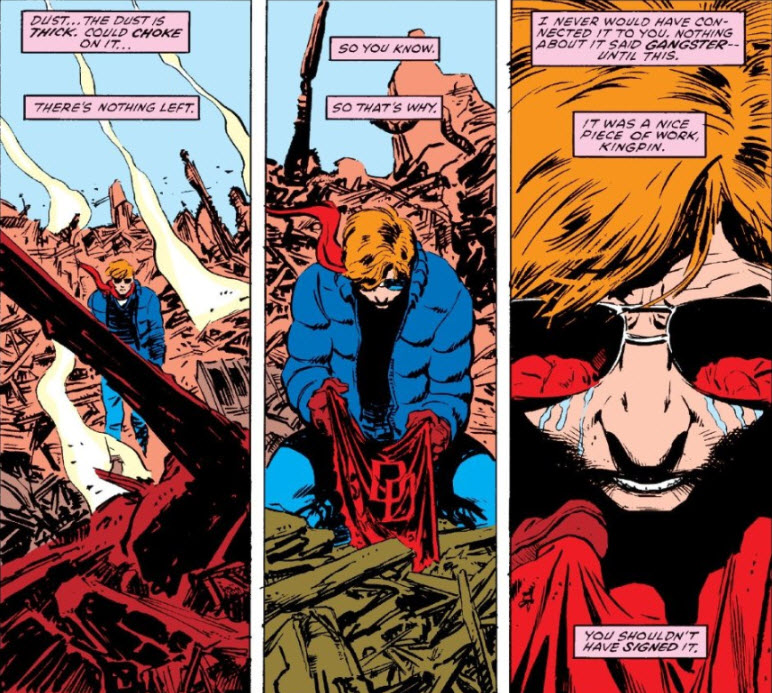
Next week, another look at a classic Marvel tale of years past!


